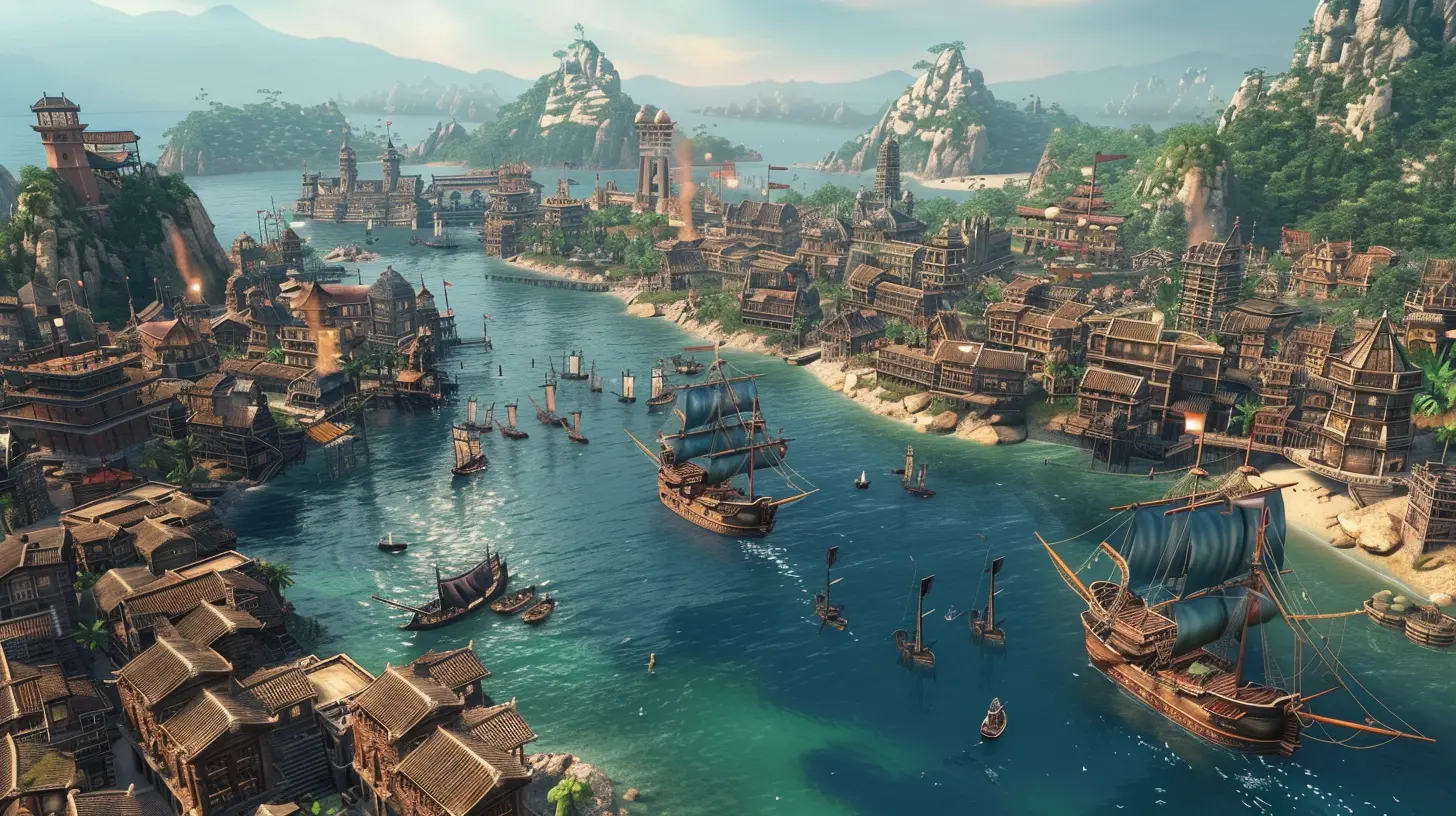Understanding Supply and Demand in Digital Worlds
2 October 2025
If you’ve ever wandered through the auction house in World of Warcraft, traded items in Rocket League, or flipped skins in CS:GO, you’ve danced with the invisible hands of supply and demand. And guess what? Even though we’re talking about virtual goods, the rules of economics still apply—just with a bit of gamer flair.
So buckle up, whether you're a casual player, a professional trader, or just curious about how game economies tick, we’re diving deep into the wild and pixelated world of supply and demand in digital realms.
What Even Is Supply and Demand?
Let’s break it down, quick and dirty style.Supply is how much of a thing exists or is available. Think loot drops, crafting materials, skins—if it’s in the game and people can get it, it’s part of the supply.
Demand is how much people want that thing. A rare sword that looks cool and gives you mad stats? That’s going to be in hot demand.
Now, where it gets spicy is when these two forces interact. You’ve probably heard the old phrase: _“High demand and low supply = skyrocketing prices.”_ That’s as true in GTA Online’s black market as it is in your high school economics textbook.
How It All Plays Out In Digital Worlds
1. Virtual Goods Are Just Like Real Ones (Kinda)
Okay, they’re not tangible—you can’t hold a Fortnite skin or a League of Legends champion in your hand, but they have value. And in many games, players will pay real money for these digital items.Some items are purely cosmetic and don’t affect gameplay, while others give competitive advantages. Either way, their value fluctuates based on how many people want them and how hard they are to get.
For example, let’s say there’s a limited-time skin in Overwatch. Only players who log in during an event can grab it. That limited availability creates artificial scarcity (low supply), but if everyone wants it (high demand), its value shoots through the roof.
2. Developers Play God (Seriously)
Unlike the real world, economic rules in digital worlds are governed by the devs. They decide what drops, how often it drops, and whether you can even trade it.Think of it like this: Developers have the ultimate cheat codes. They control the faucet. If they feel like too many players have that awesome dragon mount? Boom—drop rates go down. Too few players engaging with a crafting system? They might reduce material costs.
When developers tweak supply or demand intentionally, they’re basically steering the in-game economy to keep things balanced... or interesting.
3. Player Behavior Matters – A Lot
Gamers aren’t just passive consumers—we’re active participants. When a new item releases, you’ll see a rush of players trying to get it or flip it for profit.Let’s take a look at an example: A new weapon blueprint drops in a sci-fi MMO. It’s rare, powerful, and shiny. Early adopters snag it and start listing it on the in-game market for insane prices. Other players see the trend and join in the hunt or decide to sell whatever resources are needed to craft it.
This chain reaction? That’s pure supply and demand in motion. The more people chase the item, the higher its demand. But once too many people craft and sell it? The supply increases, value drops, and the market stabilizes or crashes.
Microtransactions and Real-World Cash
4. When Supply and Demand Leaves the Game
Let’s talk real money, because virtual economies can get real, real fast.Games like CS:GO and Dota 2 have marketplace systems where you can trade skins for actual cash. The rarer and more desirable the skin, the more it’ll go for on the market.
This creates an entire sub-economy. Some people treat it like flipping sneakers. Buy low, sell high. It’s part of what makes the digital world feel alive—you’re not just playing a game; you’re participating in a living, breathing economy.
But it also means that developers have to be super careful. Too much supply too quickly and the market gets saturated. Too little and it becomes gatekept. It's a delicate balance.
Scarcity: The Ultimate Hype Machine
5. Why Rare Things Are So Darn Valuable
Let’s face it, gamers love loot. But what makes loot juicy is not just the stats—it’s how rare it is. Developers know this. That’s why we have legendary gear, mythic drops, and time-limited events.Scarcity taps into our FOMO (fear of missing out). When an item is available for a limited time or has a very low drop chance, we value it more—even if it's just a cosmetic. That’s demand driving up because of limited supply.
A great example? Limited-time battle pass content. Once the season is over, it’s gone forever. If you didn’t get that exclusive emote or skin, tough luck. That artificial scarcity adds serious value to those items.
Inflation in Digital Economies
6. When Everyone Has Gold, Gold Has No Value
This one hits hard if you’ve ever grinded for hours, only to realize your in-game currency is worth less than it was last week. That’s inflation.In many MMOs, constant farming and gold generation cause inflation. More currency = higher prices for goods and services. Classic economics.
To fight this, developers introduce gold sinks—features that take money out of the economy. Think repair fees, auction house cuts, or luxury items nobody really needs but everyone wants.
It’s basically in-game taxes.
The Secondary Market and Player Traders
7. The Rise of the Player-Economist
Some players aren’t in it for the raids or the kills—they’re in it for the trades. They play the auction house like it's the stock market.In games with a player-driven economy (like EVE Online or Old School RuneScape), these digital traders analyze supply chains, monitor market trends, and hoard resources like digital dragons sitting on virtual loot.
EVE Online even has in-game corporations hiring economists. That’s some next-level economy building.
Dynamic Supply: Event-Driven Markets
8. Events Shake Up the Economy
Ever noticed how prices go nuts during in-game events? That’s because events alter both the supply and the demand.Maybe a seasonal event needs pumpkins to craft limited-time gear. Suddenly, pumpkins go from being ignored to being the hottest item in the market.
And when the event ends? Boom. Demand drops. Prices tank. It’s a rollercoaster, and it all comes down to temporary shifts in supply and demand.
How Players Manipulate the Market
9. Market Flipping and Price Fixing
Ever seen someone buy out all the cheap listings of an item, only to repost them for twice the price? That’s market manipulation. And it’s surprisingly common in digital worlds.Players form mini cartels, fix prices, or even use bots to control supply. In some cases, this kind of manipulation can totally distort the economy—especially in games that don’t have strict checks and balances on their trading systems.
Real Lessons from Virtual Economies
10. What Can We Learn From All This?
Here’s the crazy part: Digital economies mirror the real world way more than we think. We’re talking inflation, supply chains, market speculation—you name it.Understanding how supply and demand works in a game can actually make you savvier in real life. It gives you insight into:
- How markets react to trends
- The importance of scarcity
- How value is perceived vs. actual utility
- Why people sometimes act irrationally with money
And if you’re the type who flips rare Pokémon cards or collects NFTs, those lessons apply across the board.
The Future of Digital Economies
11. What’s Next for In-Game Supply and Demand?
With the rise of blockchain gaming and NFTs, we’re entering a new era. Items now have permanence, can be traded across platforms, and even have real-world value outside the game.This brings in new layers to supply and demand:
- True scarcity: You can't just “print” more items.
- Cross-game economies: Trade a sword in Game A for armor in Game B? Wild.
- Ownership: Players are no longer renters—they're actual owners.
It’s both exciting and a little scary. But one thing’s for sure: understanding supply and demand is going to be more important than ever.
TL;DR – Recap Time
- Supply = How much of something exists. Demand = How much people want it.- Even digital stuff like skins, gold, and loot follow economic rules.
- Developers control supply; players control demand.
- Rare items = higher value (thanks, FOMO).
- Inflation can wreck a game economy, so devs implement gold sinks.
- Player-driven markets can be wild—flipping, hoarding, price fixing.
- Events change the economy. Temporary demand = temporary boom.
- Real-life economic principles apply. You can learn a lot from pixel money!
- Next-gen games (NFTs, blockchain) will change how supply/demand works.
Alright, gamer. Next time you open your game’s marketplace or trade chat, think about the mechanics behind the madness. You’re not just buying a sword—you’re interacting with an entire digital economy that’s almost as real as the one outside your front door.
And honestly? That’s pretty epic.
all images in this post were generated using AI tools
Category:
In Game EconomyAuthor:

Jack McKinstry
Discussion
rate this article
1 comments
Bryce McEvoy
Supply and demand dynamics shape player experiences, driving innovation and economic strategies in digital gaming.
October 10, 2025 at 3:34 PM

Jack McKinstry
Thank you for highlighting the crucial role of supply and demand in shaping player experiences and innovation in digital gaming!


